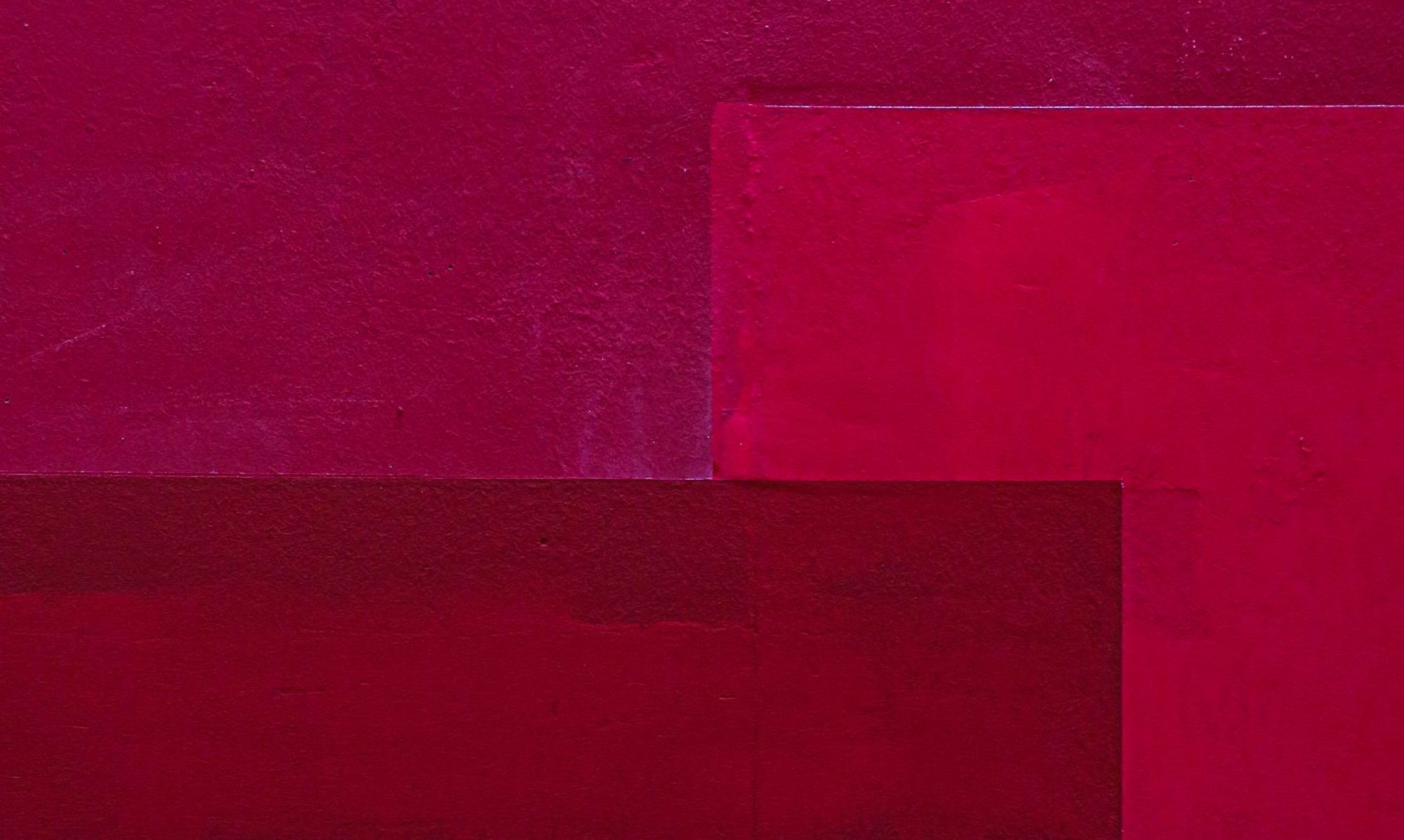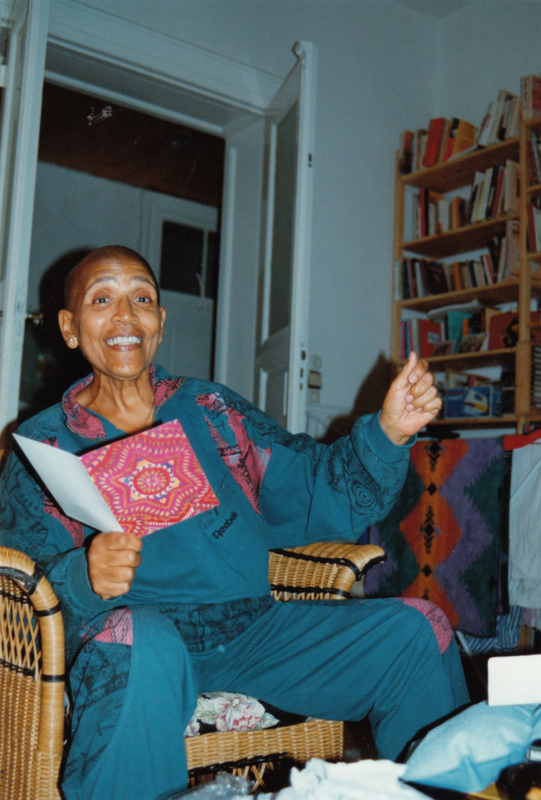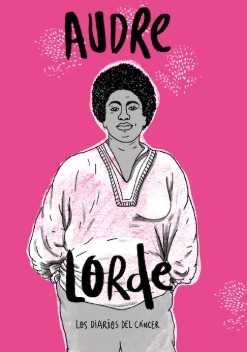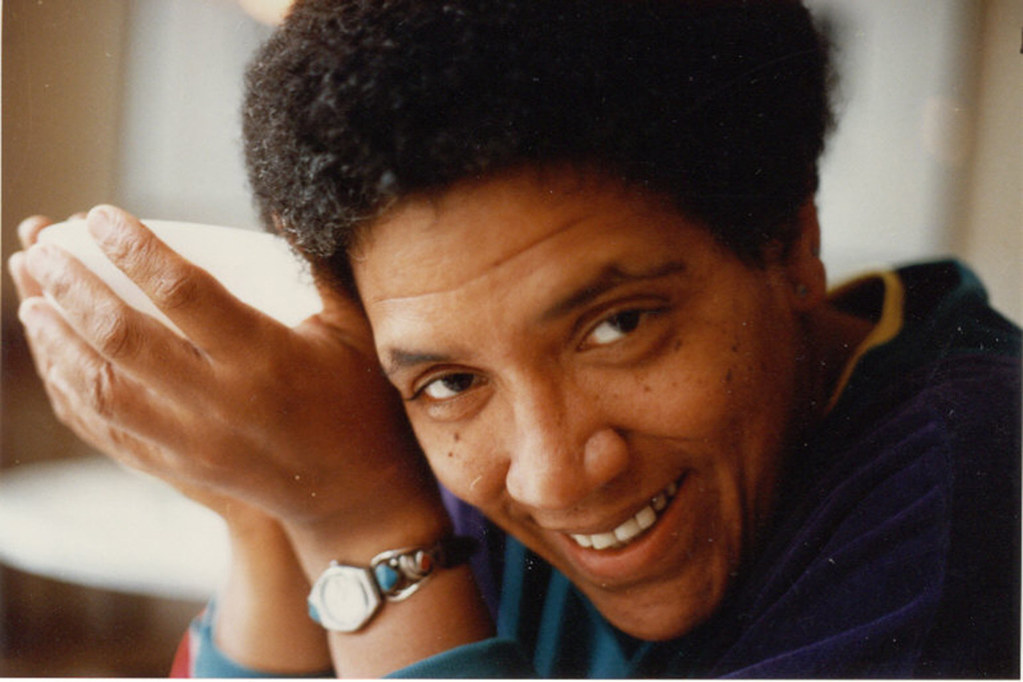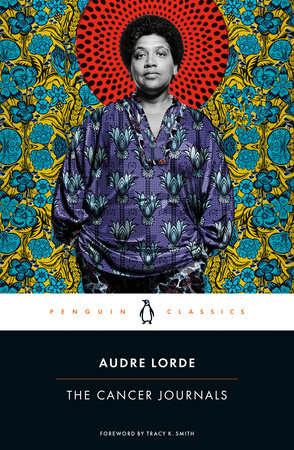In a world where equality is written into law, why are women paid less than a man for the same job? Why are women more likely to be stalked, raped, abused, and even killed? Why are young girls taught to travel in packs or how to turn everyday items into weapons? To check the backseat of their car before getting in? Why are women misjudged, misquoted, misunderstood, underestimated, cast aside? This world is not meant for women to thrive, we can barely survive.
In a world where “we were never meant to survive” (Lorde, “A Litany for Survival”), how do we keep on surviving? What keeps us alive? Sisterhood–a community of women dedicated to keeping each other lifted. Finding that sisterhood is vital. Someone who knew that well was Audre Lorde. A self-described: “black, lesbian, mother, warrior, poet” (Poetry Foundation), Lorde’s life was full of rich female relationships of all kinds. Some friends, some lovers, some both; some long-term, some fleeting, but all life-sustaining. Without that love, Lorde may not have survived like so many other women. This community taught Lorde about the world, herself, as well as buoying her when needed. Lorde’s works often reflected the necessity of these relationships, through her adolescence, into adulthood, and her battle with breast cancer the love of and from women were central.
Historically, women have been pitted against each other, “encouraged to view each other with suspicion, as eternal competitors, or as the visible face of our own self-rejection” (Lorde, “Scratching…” 49). The patriarchal world fears the power women would have if we came together so they pitted us against each other. Lorde was often critical of the way women fought against each other for crumbs. In her personal life she found that creating a support network–a sisterhood, is vital for surviving this world that would prefer to keep her down. A world that would rather she not survive, not grow into her true power.
From her adolescence, Lorde banded together with other women. In her biomythography Zami, the plot is often driven by the relationships Lorde is experiencing at the time. “The Branded” as her high school friend group called themselves were a central part of her adolescence as well as her poetry writing. Lorde writes “we were The Branded, the Lunatic Fringe, proud of our outrageousness and our madness…we wrote obscure poetry and cherished our strangeness…We became The Branded because we learned how to make a virtue out of it [suffering]” (Lorde, Zami 82). Lorde often describes her poetry as her primary mode of communication. Her time with The Branded helped hone her communicative poems, more than likely providing her a way to work through the pain and suffering she felt then and later in life. In the same vein of her high school experiences, Lorde meets and befriends Gennie. Gennie is the first true friend Lorde has. Together the two girls lead an experimental life; they play with their identities, trying on different costumes to be different people (Lorde, Zami 87-88). With Gennie, Lorde is able to escape the rigidity of her mother’s home and experiment with the kinds of lives she could live. They spend “glorious and exciting days” away from the “war at home” (Lorde, Zami 89). That summer with Gennie became a catalyst for what would become Lorde’s young adult life. Gennie’s suicide cuts short a beautiful life and a beautiful love. Through her depiction of these friendships in her adolescence Lorde reveals the power and impact they can have.
As I piece through Lorde’s works, from her poetry to her essays, there are more often than not mentions of women and their power. Even when she seems to be writing about a topic unrelated to sisterhood, the importance of female friendships continually resurfaces. Clearly, for Lorde, that sisterhood is foundational to everything and anything else. She recognized that in her life, but also as a larger need for women. Even though she was often critical of the sisterhood practiced in the world, her theory of that power remains part of a lot of her work. Women all have battles to wage, tyrannies against them and that together we can ALL make it out alive. We should band together because of our differences, not in spite of them. In her piece “The Transformation of Silence into Language and Action” that strength amongst women is crucial to her thesis. She writes, “we [women] all shared a war against the tyrannies of silence. They all gave me a strength and concern without which I could not have survived intact” (Lorde, “The Transformation…” 41). When she reflects on these women at the end of Zami, she writes that “every woman I have ever loved has left her print upon me, where I loved some invaluable piece of myself apart from me–so different that I had to stretch and grow in order to recognize her” (Lorde, Zami 255). Loving the women around her was another way to love herself. Those women helped her recognize pieces of herself that she was neglecting or missing.
In her adult life, her love of women became ever prevalent. She developed deep friendships with other women writers and activists. One example of that is her friendship and work with Adrienne Rich. These two women not only shared a deep friendship but a rich working relationship as well. They challenged each others’ writing, “Lorde urging Rich to be less sentimental and more nuanced….and Rich encouraging Lorde to write about the fear of cancer that loomed over life, which ultimately became one of Lorde’s most powerful essays” (Savonick Manuscript). Without the relationship the two women shared, there would be a lot missing from their library of works. They challenged and questioned each other all in the name of loving each other. One of the most striking things about their relationship was the work they did together or because of each other. Both Rich and Lorde learned new perspectives from each other. Each learning the other’s perspective from a racial standpoint that opens up the complicated and often messy inner-workings of sisterhood. In a documented interview between the two women they discuss everything from Lorde’s life and works, to their shared teaching experiences and life experiences. Towards the end of the interview Rich asks Lorde for help in perceiving the world of Black women. What follows can read tense as they both try to come to an understanding between each other. This tenseness between them can be spiraled out to a larger issue between Black women and white women. The message that women’s movements commonly hold are that they are for all women, however, these often excluded Black women–and that was something Lorde was incredibly critical of. Rich implores Lorde for her point of view to help align them towards an understanding. Lorde responds “that’s the only thing I’ve had to fight with, my whole life, preserving my perceptions of how things are, and later, learning how to accept and correct at the same time. Doing this in the face of tremendous opposition and cruel judgement” (“Interview Audre Lorde/ Adrienne Rich” 105). Rich accepts Lorde’s answer with her only view, “I’ve had great resistance to some of your perceptions. They can be very painful to me. Perceptions about what goes on between us, what goes on between Black and white people…But I don’t want to deny them. I know I can’t afford to” (“Interview Audre Lorde/ Adrienne Rich” 105). In this isolated interview these women begin a conversation that needs to happen globally. Women are stronger together, that has been proven, but we have to come together in love and understanding. We have to accept that there are differences between us, and we should revel in those. Difference is beautiful and central to the human experience, but those differences should be appreciated in political movements such as the Women’s movement. Use the differences in our sisterhood to bring about a new way to be, a new way to live with and love each other. Do not turn a blind eye to the messy because it is easier that way, embrace it, work through it even when it gets uncomfortable. The mess will be worth it.
Rich’s encouragement to Lorde to write about her experiences with cancer may have led her to publish “The Cancer Journals” which is a rich text of feminine work. Through Lorde’s entire ordeal with breast cancer, from diagnosis to recovery, she is surrounded by a network of women who loved her. She writes extensively about the support she felt from all of the women, even the ones she had never met and the ones she did not like. She felt this sense of them supporting her when she could not support herself. At a time of confusion and pain, Lorde writes that “I do know that there was a tremendous amount of love and support flowing into me from the women around me, and it felt like being bathed in a continuous tide of positive energies” (Lorde, “Cancer Journals” 39). Through both Lorde’s testimonies as well as reader inference, it is clear that the network of women around her was crucial to her recovery.
In this world those who are different, those who do not fit, are pushed down, they are not meant to survive. Lorde saw herself as one of those people. She saw that more often than not a lot of others were not surviving. So why did she? How did she survive? One of the possible answers seems to lie in her own inner feminine fire as well as the presence of such a strong clan of women and their dynamic energy surrounding her.
Work Cited
Lorde, Audre. “A Litany For Survival By Audre Lorde | Poetry Foundation”. Poetry Foundation, 2020, https://www.poetryfoundation.org/poems/147275/a-litany-for-survival.
——-. The Cancer Journals. Aunt Lute Books. 1980.
——-. “An Interview: Audre Lorde and Adrienne Rich.” Sister Outsider, edited by Nancy K. Bereano, Crossing Press, 2007, pp. 81-109.
——-. “The Transformation of Silence into Language and Action.” Sister Outsider, edited by Nancy K. Bereano, Crossing Press, 2007, pp. 40-44.
——-. “Scratching the Surface: Some Notes on Barriers to Women and Loving.” Sister Outsider, edited by Nancy K. Bereano, Crossing Press, 2007, pp. 45-52.
——-. Zami: A New Spelling of My Name. New York, Crossing Press, 1982.
“Audre Lorde | Poetry Foundation”. Poetry Foundation, 2020, https://www.poetryfoundation.org/poets/audre-lorde
Savonick, Danicka. Insurgent Knowledge: The Poetics and Pedagogy of Toni Cade Bambara, June Jordan, Audre Lorde and Adrienne Rich in the Era of Open Admissions. Chapter: “Audre Lorde’s Pedagogies of Difference” 2020.
